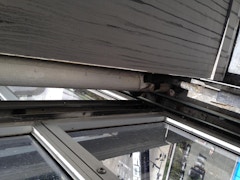
Doubling Mies
Mies van der Rohe’s concurrently designed projects for Commonwealth Promenade Apartments (1953-1956) and the Esplanade Apartments (1953-1957), saw

Mies van der Rohe’s concurrently designed projects for Commonwealth Promenade Apartments (1953-1956) and the Esplanade Apartments (1953-1957), saw

As facades become more sophisticated and complex, more detail-intensive and performance-critical, it's vital that architecture students develop a

Architects today must explore alternative enclosure materials to meet evolving energy codes and embodied carbon regulations. Terra cotta has been

Projecting imagery onto building facades is not only becoming a marketing necessity for successful urban spectacles but is also altering social urban


This paper examines two profoundly different design approaches: one, herein called ‘autonomous’, where the building’s design is governed by internal



There were good why reasons early US Modernism first evolved in California– wide open sites with no constraints (physical or zoning), and effectively

CURRICULUM FOR CLIMATE AGENCY: DESIGN (IN)ACTION This year’s Teachers Conference will be held virtually from June 24 – 25, 2021. The virtual conference will be a forum for dialogue & debate on Curriculum for Climate Agency: Design (in)Action.
